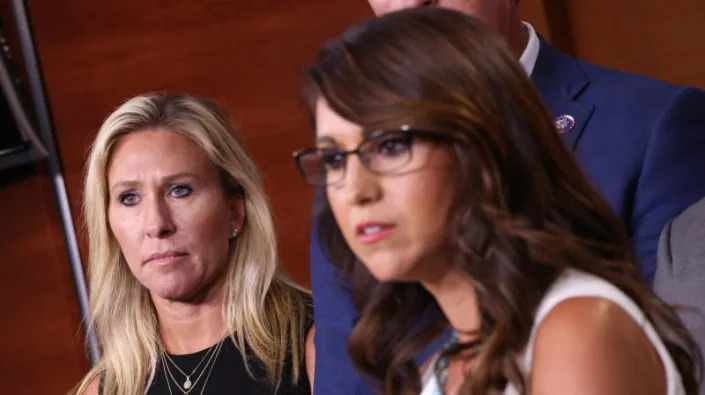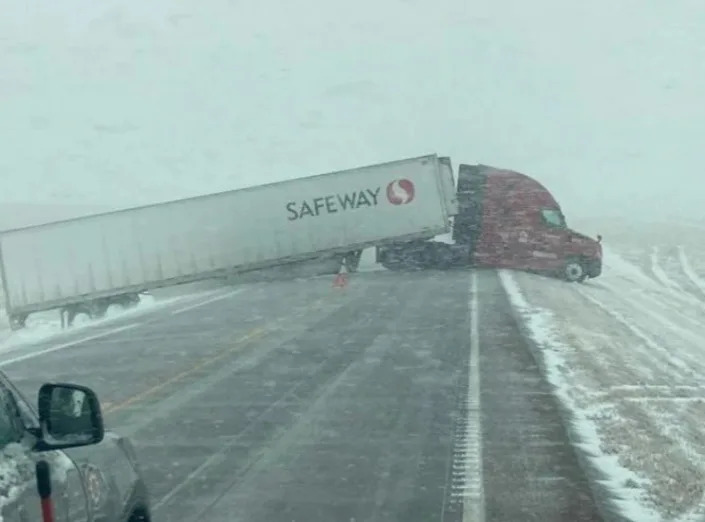Kylie Cheung
Wed, December 21, 2022

Sen. Cindy Hyde-Smith
In 2018, Sen. Tammy Duckworth (D-IL) became the first senator to give birth in office after using in vitro fertilization (IVF) and senators across party lines joined Duckworth in celebrating her child’s birth. Four years later, Duckworth’s Republican colleagues—namely Sen. Cindy Hyde-Smith (R-MO)—have blocked the Right To Build Families Act, a bill introduced by Duckworth and Sen. Patty Murray (D-WA) to create a federal right to use IVF and other fertility technologies, and prohibit any restrictions on individuals seeking fertility treatments.
On Tuesday, when Duckworth requested to pass the bill through unanimous consent, Hyde-Smith objected to it. “The same Republicans who claim to ‘defend family values’ just blocked my bill to protect the right to start a family through IVF,” Duckworth said in a tweet shortly after. The Illinois Democrat called right-wing threats to IVF “the ultimate, nightmarish blend of hypocrisy and misogyny.” In a statement shared with Jezebel, Murray called Hyde-Smith’s vote against their “commonsense” bill “outrageous,” and a result of Republicans’ “extreme stance on reproductive rights.”

Sen. Tammy Duckworth
In the absence of Roe, fertility doctors, their patients, and experts have expressed concern that abortion bans that accord legal personhood to embryos could lead to IVF being banned or criminalized—all while top Republicans including Georgia Gov. Brian Kemp (R) have been caught on hot mic advocating for restrictions on IVF. Last month, ProPublica released audio of Tennessee lawmakers debating the right time to start going after IVF and birth control post-Roe. In other words, without a law like Duckworth’s bill, there’s a credible legal threat to doctors and their patients.
“Even if it’s not banned or heavily regulated, abortion bans mean there’s a gray area that might chill doctors from even providing those services,” Dana Sussman, acting executive director of Pregnancy Justice (formerly National Advocates for Pregnant Women), told Jezebel.
The process of IVF involves eggs being fertilized outside of the uterus, then inserted in a needle and placed inside someone’s uterus. If the embryo implants to the uterine wall, pregnancy occurs. But the chance of IVF being successful, especially on the first couple of attempts, stands at just around 50 percent. Over the course of trying to get pregnant through IVF—a process that can be immensely difficult for people navigating fertility struggles, even without legal threats—many embryos don’t implant. Fertility clinics often freeze or sometimes have to dispose of unused embryos. Post-Roe, doing so could be risky business in some states.
Over the summer, IVF providers said they’re facing confusion about what abortion bans mean for their services. The Wall Street Journal reported in June that some patients are asking providers to move their embryos to states that protect abortion rights, while providers are urging lawmakers to pass legislation that explicitly protects IVF.

Photo: Bloomberg (Getty Images)
Elizabeth Nash, the principal policy analyst for state issues at Guttmacher Institute, told Jezebel earlier this year that IVF will be “most at risk” in states with abortion bans that explicitly include “life begins at conception” language. According to Nash, language like this “defines ‘child’ as starting at fertilization,” and none of the bans offer specific exceptions for IVF. A handful of states, including Arkansas, Kentucky, Louisiana, Missouri, and Texas, have active bans that include this language.
In addition to these bans, 40 states have fetal homicide laws that effectively give embryos and fetuses personhood. These laws, originally created to address the issue of homicide as a leading cause of death for pregnant people, have been co-opted and misused by anti-abortion activists and prosecutors to criminalize people for pregnancy loss. With criminal charges for pregnancy outcomes on the rise, there’s fear IVF could be targeted with the same cruelty.
“IVF is fundamentally at odds with the ideology surrounding fetal personhood, that’s the heart of the anti-abortion movement,” Sussman said. Even as top Republicans say abortion patients won’t be criminalized for getting abortions, blocking a bill to protect IVF users flies in the face of this. Yet, Sussman points out that IVF’s broad popularity has previously resulted in an anti-abortion fetal personhood ballot measure being defeated in Mississippi in 2011. “Going against IVF activates a lot of people.”
Ultimately, a Republican Senator blocking a common-sense bill that doesn’t even specifically involve abortion is an outrage but not a surprise. Over the summer, nearly 200 House Republicans rejected a bill protecting the right to birth control. Hyde-Smith, herself, recently backed a bill to ban abortion on sovereign, Indigenous land. Fortunately, Duckworth told Axios last week that she and Murray will continue to introduce the bill until it’s successful.
Jezebel


















